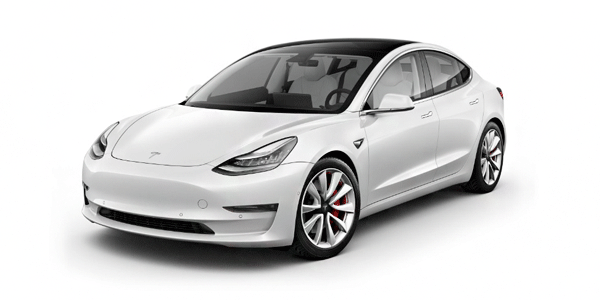Electric vehicles are gaining in popularity, and car audio companies are beginning to take note.
The EV or hybrid EV market is only about 1 percent of sales right now, but it is poised for big growth. A conservative view from SEMA pegs EV sales reaching 7 percent of the market in 2025. But director of Market Research Gavin Knapp says that new EV models will flood the market over the next 5 years–hundreds of models world wide.
Car audio suppliers say that EVs will cut further into head unit sales. Consumers will be less likely to switch out a head unit in such a complex vehicle. And EV radios are more heavily tied into core electrical and electronic functions of the vehicle, said Strategy Analytics analyst Edward Sanchez.
Matt Schaeffer of SoundFX, DE has performed about 100 installs on Teslas and has never changed out the head unit.
Instead, say suppliers, the industry will focus more deeply on integration and adding amplifiers and speakers.
AAMP Global and NAV-TV are already investigating products for EVs.
AAMP’s Kevin Kuenzie said, “I’m confident, in the future, we’ll be able to integrate into EVs.” The shift to EVs will be “a normal product shift,” similar to those car audio has had in the past, he added.
NAV-TV suggests that amplifier suppliers may include a voltage switch to match different car voltages, much the same way suppliers of PCs might have a 110/ 220 voltage switch for US versus European standards. Currently, EVs run on different types of batteries with different voltages.
Automotive Data Solutions (ADS) said it is exploring the viability of offering amplifier replacement solutions for Telsas.
Tesla uses a larger battery to drive the engine and then a 12 volt battery to run smaller electronics. But other vehicles may use batteries with different voltage levels as there is no standard at present.

Todd Ramsey of Ramsey Consulting said, “…small footprint, multi-channel amplifiers (often with integrated DSP) are ideal for the EV applications because they are efficient with regard to low current draw and minimal heat. Overall system power levels of 500-600 watts RMS with full range Class D amplifiers should not have a significant effect on EV range.” He also noted that subwoofers should continue to be a popular upgrade with EVs.
“In some cases, like with Tesla, speaker-level signals from the factory amplifier can simply be connected into a DSP signal processor and there isn’t a need for a specialty interface module. The way to get usable audio signal from these cars is kind of like other non-EV cars, it’s vehicle-specific; sometimes even whether or not there is a premium or non-premium system,” Ramsey added.

We can expect that suppliers will continue to experiment with new materials to make speakers lighter to preserve the stated range of a vehicle.
But Schaeffer, a leading fabricator who has developed a specialty in Tesla builds, says the impact of adding an amp and speakers on Tesla range is negligible. “When we first began working on Teslas, we talked to a Tesla engineer. His message was [adding audio to the car] is the equivalent of running an LED or two off the battery. The amount of impact of this is hard to even measure it’s so small…. You are propelling electrical motors to run for a long period of time down the street at high speed. The amount of power that takes is not even relative to an audio system. When you talk about range, it won’t even be measurable.”
Schaeffer said he’s never had any reports from customers claiming any degradation to the battery due to an audio install. Generally, the cars are not hard to work on, Schaeffer said. In some cases they are easier to retrofit. He believes the move to EVs will be good for the car audio industry.
“In a traditional car with an alternator; that poses the greatest problem for introducing noise. When you have a Prius electric vehicle, it’s basically like bench testing equipment outside the car. You don’t have to worry about noise as we do in a traditional car. The amplifiers are running at their most efficient state because we have extremely stable voltage. With alternators in a car, as soon as you come to a stop light and you are still jamming on the system and the voltage drops, some amplifiers are going to draw more amperage from the vehicle,” he said.
Of all the Teslas, the Model 3 required a little more tweaking, Schaeffer said. “If the Model 3 is sitting long enough, it will cut off power to the interior so that the 12 volt battery will completely go to sleep, and it sometimes goes to no voltage. If you have audio equipment like GPS that have capacitors, once you hook up that amp, you are going to get a spike. The Model 3 algorithms will sense that spike and think something is wrong with the battery, and in some cases, will lock certain things up. To combat that you have to build in some shunts; something that will stop the car from seeing that spike.”
Again, industry members we spoke with say they are confident the industry will adapt. As Bryan Schmitt of Mobile Solutions noted, “We’re able to adapt quickly and we’ll be able to figure it out. People are always going to want to upgrade the sound system…People are always going to want to personalize their car; and with that comes custom sound and changes to the interior and cosmetics. We will adapt and this won’t stop us…”









